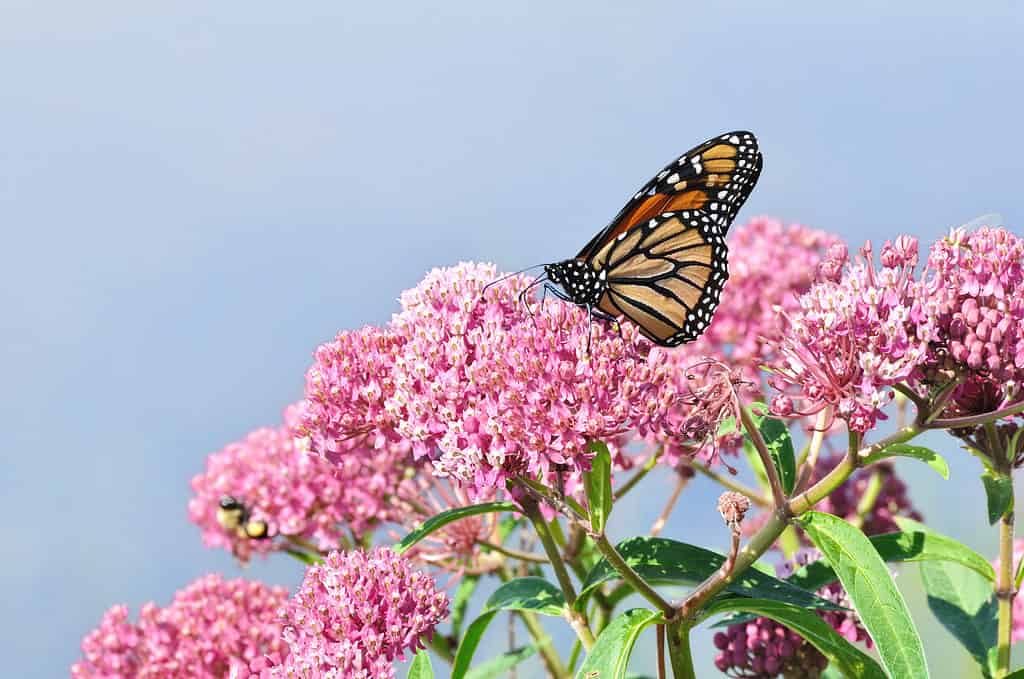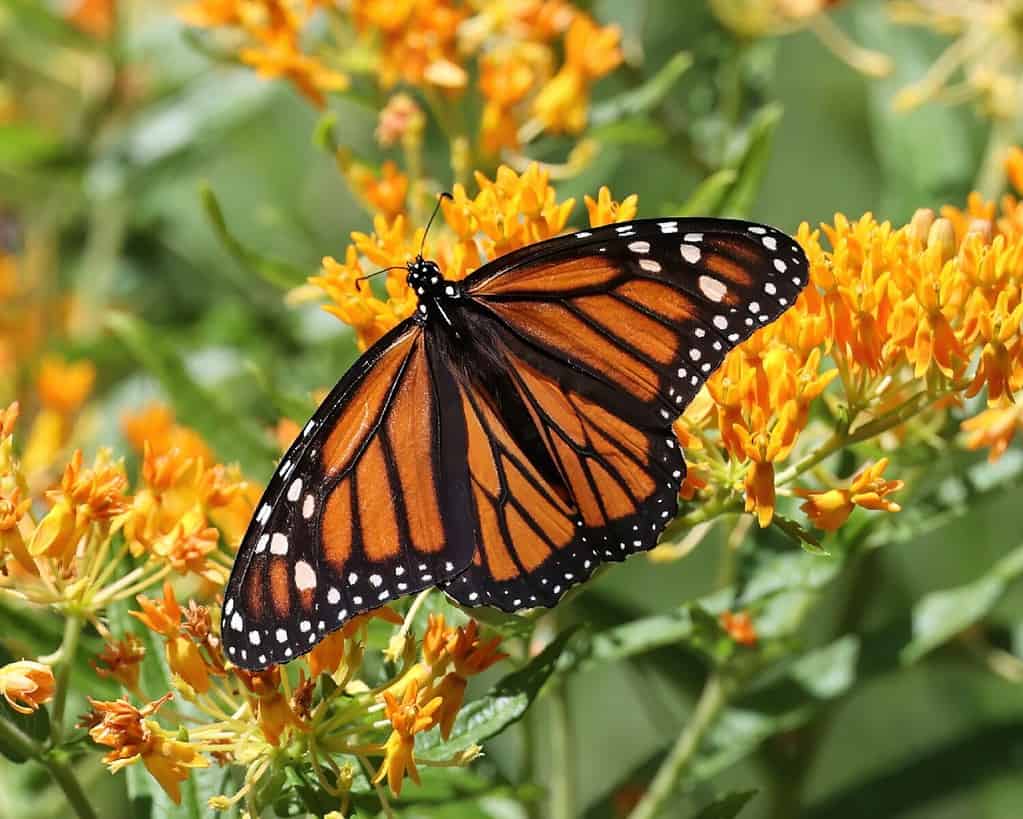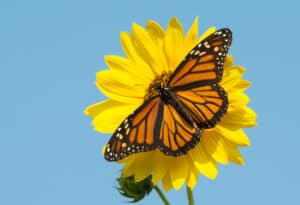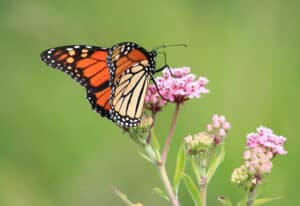Few butterflies are as easily recognized as the bright-orange monarch butterfly. However, in recent years, there has been a striking decline in the population of this once-abundant species. Below, learn how the monarch butterfly became endangered. Plus, learn more about conservation efforts and the species as a whole!
How Did Monarch Butterflies Become Endangered?

Milkweed is essential to the survival of butterflies.
©iStock.com/herreid
For many species of butterfly, survival relies on a wide variety of plants. If one of these plants becomes unavailable, then they can adapt, readily finding other plants. This, however, is not quite true for the monarch butterfly.
Monarch butterflies rely on milkweed plants. These are flowering plants that produce latex. In fact, the milky appearance of latex is where the plant gets its name. Monarch butterflies will drink the nectar from the milkweed’s flowers. They will also lay their eggs on the plant. However, it is the monarch butterfly juvenile, the caterpillar, which cannot survive without these special plants. Milkweed provides all of the nutrients that a monarch caterpillar needs to survive, grow, and, most importantly, transform into their iconic butterfly form. Because of this, these caterpillars will eat no other type of plant.
The main reason that the monarch butterfly is endangered is because of the gradual loss of this essential plant in recent years. Many people often use nearby roadways, businesses, and homes to fight unwanted plants. These often affect the milkweed plant as well, greatly reducing the population. Where milkweed plants do survive without the use of herbicides, pesticides may often act as another option. Pesticides do not hurt the milkweed plant itself, but they will kill or injure insects, including the monarch butterfly and caterpillar.
Over the years, especially when occurring on such a large scale, the use of chemicals and loss of necessary resources has led to the monarch butterfly being classified as an endangered species.
Monarch Butterfly Conservation

Loss of habitat and dangerous chemicals have significantly threatened the monarch butterfly population.
©David Trevarthen/Shutterstock.com
Monarch butterflies are a significant species in the world. As pollinators, monarch butterflies, like other butterflies and bees, are responsible for carrying pollen to the right part of the plant. This helps fruit form, feeding hundreds of other species, including humans!
Because of this, many conservation programs focus on helping this beautiful species survive. Many of these programs, especially in North America, rely on protecting the habitats of the monarch butterfly.
On average, monarch butterflies only live up to six weeks. However, some born later in the year may live as long as nine months! Because of this, monarch butterflies are a migratory species, with much of their wintering grounds within Mexico. Protecting areas such as the Monarch Butterfly Biosphere Reserve in Mexico is an essential effort in ensuring the future of this species.
However, in order to continue to enjoy the presence of the iconic monarch butterfly, the most significant conservation efforts surround the essential milkweed plant. Many organizations focus on spreading awareness, helping to highlight how modern pesticides and herbicides can lead to a major reduction in the population of this species. It is also important to focus on the significance of natural flora vs non-native lawns. As a result, many groups focused on helping the monarch butterfly, often teaching ways to foster a native pollinator-friendly yard.
Because monarch butterflies are a migratory species in North America, much of the conservation efforts currently in place for this species are collaborative efforts involving all countries involved.
Species Profile: Monarch Butterfly

The monarch butterfly spends its juvenile stages on the milkweed plant.
©Cathy Keifer/Shutterstock.com
According to research, monarch butterflies exhibit one of the most evolved migration patterns of any butterfly or moth. Many researchers believe that this species may have the most evolved migratory behaviors of all insects!
This species has many other names. Aside from monarch, the most common name is milkweed butterfly due to their dependence on the plant. Other names include tiger butterfly, common tiger, or wanderer. These names showcase the butterfly’s beautiful black and orange coloration, as well as its migratory tendencies.
Although the monarch butterfly simultaneously relies on the milkweed plant and is a good pollinator, it is, surprisingly, not a good pollinator for this plant. Instead, these butterflies are better suited for pollinating other plants while using milkweeds for food or child-rearing.
Monarch butterflies are most common in North America, especially in the United States and Mexico. However, they may be found elsewhere, including South America, Australia, and Asia. In North America, one butterfly, the viceroy (Limenitis archippus), may be easily mistaken for the monarch due to their similar colors. This is known as Müllerian mimicry.
The monarch butterfly joined the International Union for Conservation of Nature’s endangered species list in July 2022. It is currently listed as a vulnerable species.
The photo featured at the top of this post is © Nancy J. Ondra/Shutterstock.com
Thank you for reading! Have some feedback for us? Contact the AZ Animals editorial team.






